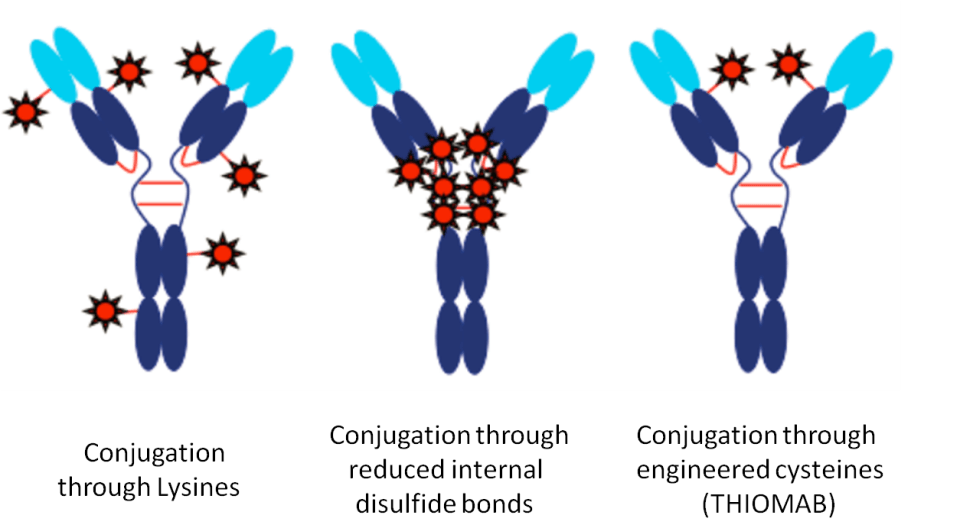

Antibody Modification and Conjugation
Creative Biolabs now provides various strategies for antibody modification and conjugation in antibody-drug conjugate (ADC) development. With state-of-art equipments, advanced techniques and wide antibody platforms, scientists and technicians from Creative Biolabs can perform custom-designed ADCs to meet every client’s requirements.

As a novel strategy in the therapy various diseases especially oncotherapy, ADCs has received much attention in recent years. It performs targeted therapy owing to the specificity of the monoclonal antibody moiety and the cytotoxicity of the payloads. The majority of ADCs in current oncology clinical trials are canonical IgGs and most of which are built on IgG1 scaffolds. One of the most critical principles to select antibodies and perform conjugation is that the biophysical integrity of antibodies should not be affected. In order to select an optional antibody efficiently for ADC development, universal ADCs are used. Universal ADCs use secondary antibodies to conjugate with the desired payloads and work as an optimized tool for antibody high-throughput pre-screening. After that, monoclonal antibody modification and conjugation are performed.
According to the different reactive sites, the conjugation strategies can be classified into non-specific conjugation through native residues, site-specific conjugation through genetically engineered sites and UV cross-linking. Non-specific conjugation technologies are based on the principle of utilizing reactive side chains of naturally occurring amino acids, such as lysine and cysteine. This method is facile and performed by altering the electrostatic properties (isolectric points) and hydrophobicity of the parent antibodies. In lysine-based conjugation, lysine residues exposed at the surface of antibodies are often used to react with linkers bearing activated esters to form amide or amidine bonds. While in cysteine-based conjugation, the antibody is treated with reducing agents followed by conjugating with maleimide-containing linkers to form ADCs. Conjugation through lysine side chain amines or cysteine sulfhydryl groups are classical approaches and they can give heterogeneous mixture of ADCs. However, site-specific conjugation can increase the site specificity of ADC conjugation by altering amino acid sequences to introduce reactive handles, which includes thio-engineered antibodies (Thio-engineered Antibody) and enzymatic modified antibodies. Thio-engineered Antibodies enable thiol-conjugation with thiol-reactive linkers at specific sites. The method of enzyme-mediated site-specific conjugation is built on that some enzymes can recognize specific amino acid tags. UV cross-linking is also a site-specific conjugation but does not require genetic engineering or pre-activated scaffolds. It is suitable to the payloads featuring a UV reactive indole-3-butyric acid (IBA) moiety. Moreover, a two-step conjugation strategy of UV photocrosslinking is now developed to facilitate more molecules conjugate to the antibody. Meditope-based strategy functions because there are molecules usually peptides called meditope that are capable of binding the Fab of antibodies via noncovalent linkage. Additionally, the identified meditope-binding site can be grafted to different antibodies and meditopes can be conjugated with different compounds, which make it possible to add functionality to antibodies.
Based on the characteristics of antibodies and specific requirements of clients, Creative Biolabs can select the most appropriate conjugation strategy for the ADCs of your interest.
There are various strategies used for antibody modification and conjugation:
- Cysteine-based conjugation
- Lysine-based conjugation
- Carbohydrate-based conjugation
- Unnatural amino acids-based conjugation
- Thio-engineered antibody
- Enzymatic modified antibody
- UV photocrosslinking(UV-NBS)
- Meditope-enabled antibodies
For research use only. Not intended for any clinical use.
This site is protected by reCAPTCHA and the Google Privacy Policy and Terms of Service apply.
